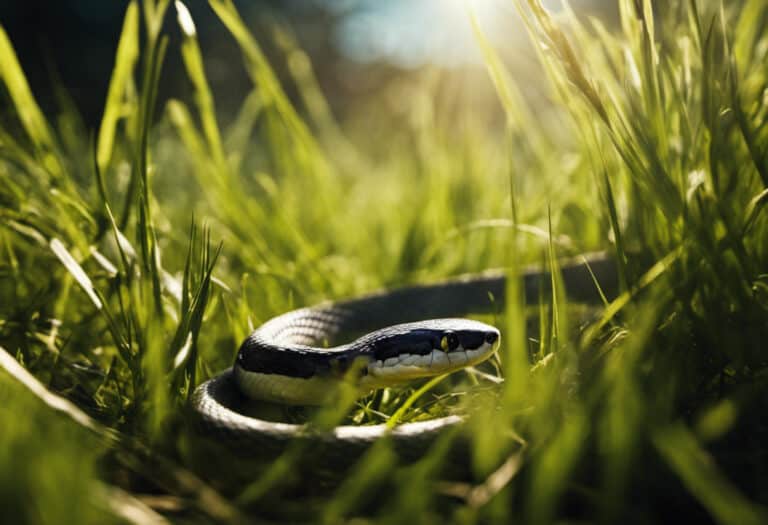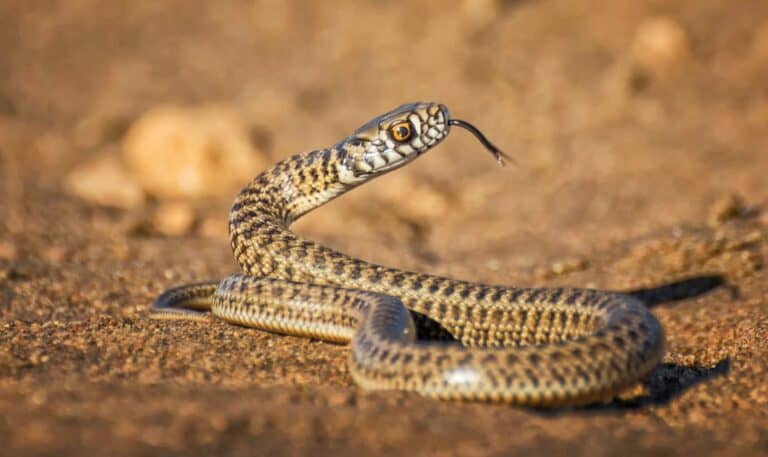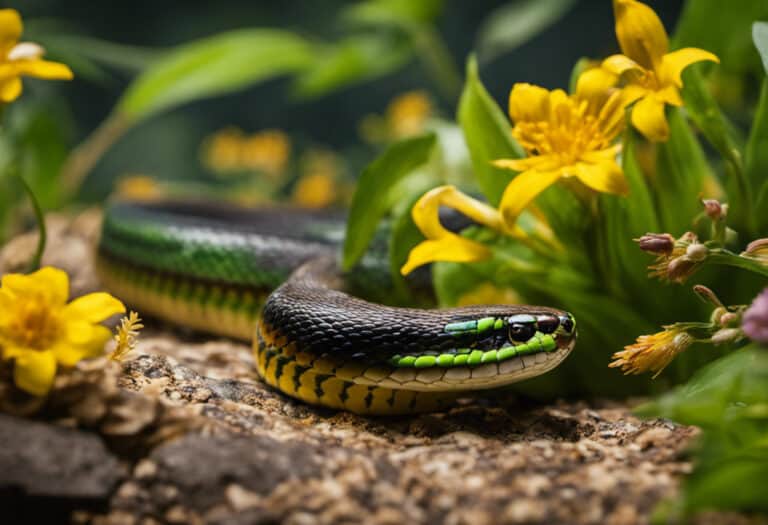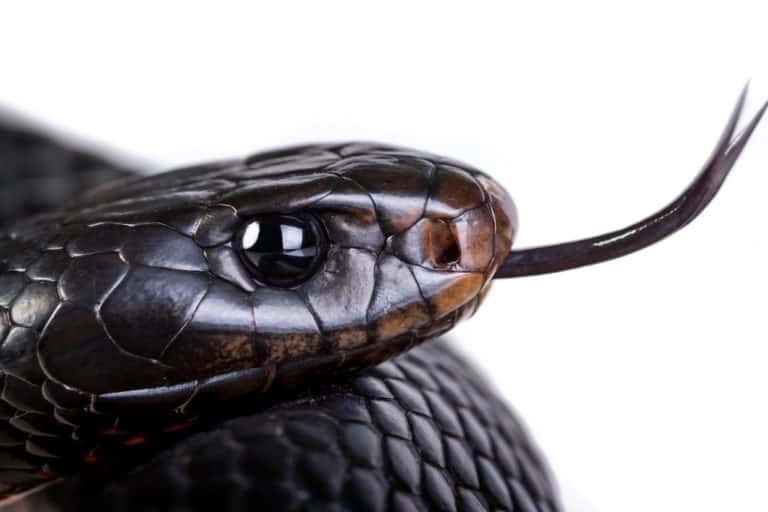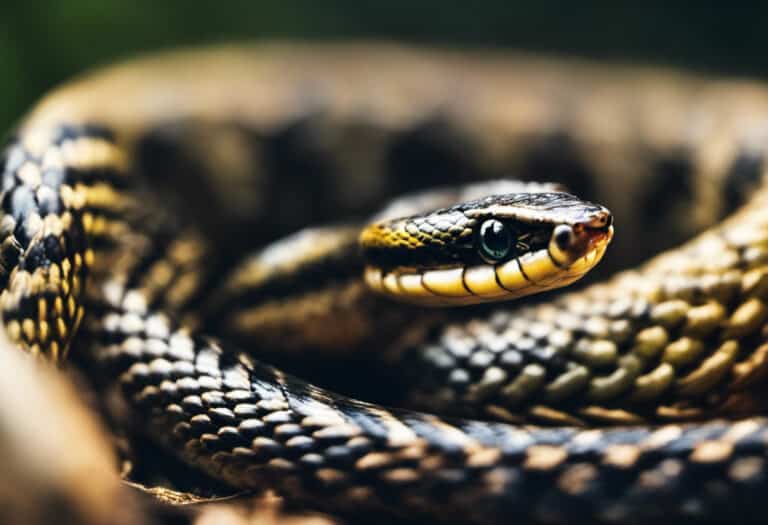How Do Snakes See the World?
Do you ever ponder the way snakes perceive their surroundings? Well, let me enlighten you—snake vision is far from ordinary. In this article, we’ll delve into the captivating realm of snake vision and explore their remarkable adaptations.
While their eyesight may be lacking overall, snakes possess extraordinary close-up vision and a talent for detecting movement.
Some even have heat-sensitive pits on their faces for locating warm-blooded creatures, while others can perceive ultraviolet light to spot prey concealed in the shadows.
Prepare to be amazed by these enigmatic creatures and their extraordinary visual prowess.
Key Takeaways
- Snakes have poor eyesight, but they have excellent close-up vision and can see objects right in front of them clearly.
- Snakes’ eyes are sensitive to movement, allowing them to spot prey or predators from a distance.
- Some snakes have heat-sensitive pits on their faces to detect warm-blooded animals.
- Snakes cannot see in color; they only see in black and white.
Snake Vision and Adaptations
Snakes’ eyes are sensitive to movement, allowing them to spot prey or predators from a distance.
Snake visual acuity and hunting strategies have evolved to give them a competitive edge in their environment.
While snakes have poor eyesight overall, they compensate for this with specialized adaptations.
Some snakes have heat-sensitive pits on their faces, which help them detect warm-blooded animals. This gives them an advantage when hunting and allows them to accurately strike their prey.
Additionally, snakes can see in the ultraviolet range, enabling them to spot prey hiding in shadows. This ability to perceive UV light gives them an evolutionary advantage, as it helps them locate prey that may be otherwise hidden.
Overall, snake vision and adaptations play a crucial role in their survival and hunting success.
Snake Vision and Color Perception
You might be surprised to learn that snakes can only see in black and white due to their limited color vision.
Snakes have only one type of cone cell in their retina responsible for color vision, unlike humans who’ve three types of cone cells. This means that snakes have a reduced ability to perceive different colors and can only distinguish between shades of gray. This condition is known as snake color blindness.
However, snakes compensate for their lack of color vision with other visual adaptations. They’ve excellent visual acuity up close, allowing them to see objects right in front of them with clarity.
Additionally, snakes are sensitive to movement, which helps them detect prey or predators from a distance. They also have the ability to see in the ultraviolet range, allowing them to spot prey hiding in shadows.
Despite their limited color vision, snakes have evolved various visual adaptations that enable them to survive and thrive in their environments.
Snake Adaptations for Finding Food and Avoiding Predators
If you observe closely, you’ll notice that snakes have a variety of adaptations that allow them to find food and avoid predators.
One of the key strategies snakes employ for hunting is their ability to camouflage themselves with their surroundings.
This camouflage technique helps them blend in and remain undetected by both prey and predators.
Snakes come in a wide range of colors and patterns, allowing them to match the environment they inhabit.
Some snakes have intricate patterns that resemble the foliage or rocks around them, making it difficult for predators and prey to spot them.
Additionally, snakes can also change their skin color to match their surroundings, further enhancing their camouflage abilities. This allows them to patiently wait for their prey to come within striking distance without being detected.
Importance of Snakes in the Ecosystem
When appreciating the ecosystem, it’s important to recognize the crucial role snakes play in controlling rodent populations and maintaining prey-predator relationships. Snakes contribute to maintaining the ecological balance in several ways:
- Controlling rodent populations: Snakes are natural predators of rodents, which can cause significant damage to crops and spread diseases. By preying on rodents, snakes help to keep their populations in check, reducing the negative impact they’ve on the environment and human health.
- Maintaining prey-predator relationships: Snakes serve as important links in the food chain. They prey on a variety of animals, including insects, birds, and small mammals, which helps to regulate the populations of these species. This, in turn, helps to maintain a healthy balance within the ecosystem.
- Indicators of ecosystem health: The presence of snakes in an ecosystem is often an indication of its overall health and biodiversity. Snakes are sensitive to changes in their environment, such as habitat loss, pollution, and climate change. Therefore, their presence or absence can be used as an indicator of the ecosystem’s overall health and the need for conservation efforts.
Fascinating Characteristics of Snakes and Appreciation
Witnessing snakes in their natural habitats can be a truly captivating experience. Snakes possess fascinating characteristics that can help us overcome our fear and develop an appreciation for these remarkable creatures.
One of the most intriguing behaviors of snakes is their ability to unhinge their jaws and swallow prey whole. They also have a specialized organ called Jacobson’s organ, which allows them to detect chemical cues in their environment.
Additionally, snakes can go extended periods without food and can remain dormant during hibernation. Understanding these adaptations and behaviors can help dispel myths and misconceptions about snakes, allowing us to appreciate their importance in the ecosystem.
Frequently Asked Questions
Can Snakes See in the Dark?
Yes, snakes can see in low light conditions. Their night vision capabilities are due to specialized adaptations, such as extra rod cells in their retinas. This allows them to detect and track prey even in darkness.
Do All Snakes Have Poor Eyesight?
Snakes don’t all have poor eyesight. Some, like the boa constrictor, have good vision. However, they can’t see colors and rely on other senses like tongue smelling and heat detection.
How Do Snakes Detect Heat?
Snakes detect heat through specialized pits on their faces, which are sensitive to temperature changes. These heat-sensing organs allow them to locate warm-blooded animals, such as prey or predators, with incredible accuracy.
What Is the Purpose of a Snake’s Forked Tongue?
The purpose of a snake’s forked tongue is to gather chemical information from the environment. The tongue flicking helps them analyze scents, locate prey, and avoid predators. It’s an important adaptation that aids in their survival.
Do Snakes Have Any Predators?
Snakes have predators like birds, mammals, and other snakes. They use camouflage techniques to blend in and avoid detection. This predator-prey relationship is crucial for maintaining balance in the ecosystem.
Conclusion
As you reflect on the intriguing world of snake vision, it becomes clear that these creatures possess a unique perspective on the world around them.
From their remarkable close-up vision and ability to detect movement, to their heat-sensitive pits and ultraviolet perception, snakes have adapted to survive and thrive in their environments.
Their reliance on other senses, such as tongue smelling and heat detection, further highlights their resourcefulness.
So next time you encounter a snake, take a moment to appreciate their incredible adaptations and the vital role they play in our ecosystems.
